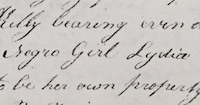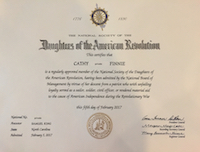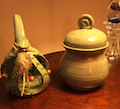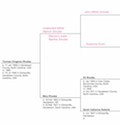Ashes to Art - Honoring Your Loved One in Pottery
In a genealogy podcast recently, I heard an interview with a ceramic artist who offers an unusual service. Since I’m not only a genealogist, but also a potter, I was interested immediately.

The Extreme Genes podcaster, Scott Fisher, recently interviewed artist Justin Crowe, who makes a ceramic pottery glaze made from the ashes or cremains of his clients’ loved ones.
I decided to look into this topic a little further, and I found other artists making unique works of art with cremation ashes as a component. In times past, our ancestors did all kinds of things to honor and keep loved ones near after death, from funerary photographs to keepsakes.
In the Victorian era people kept locks of hair in lockets, for example. In some cultures, mourners may keep a piece of bone from the deceased. And of course, some people keep the ashes of their dearly departed nearby, perhaps on the mantel, or they scatter them at a favorite place.
And actually, bone china, which is similar to porcelain ware, is made using bone ash, which gives it a milky translucent white color. So, this whole idea of cremation art is not really that strange! You may have used dinnerware made from bones and didn’t even realize it!
Instead of an urn holding the ashes of your departed loved one (or pet), why not have an urn, plaque, or art piece made from those ashes?
It would be infinitely more durable since the ashes would no longer be “spillable.” You could even have an inscription on the pottery itself so that future generations know just who they’re holding. An art piece could be designed around an aspect of the person’s life or personality to truly honor who that person was.
Bone Ash in Art

I decided to learn more about bone ash by making some myself. So I found a bag of soup bones in my freezer and fired them up in my kiln. After I started the kiln, I became terrified of ruining my studio, especially after I saw how much smoke was involved.
But, after the usual firing and cooling process, I ended up with pure white bones that were easy to crush into a powdered ash, and my studio was no worse off than after any other firing.
Bone ash is not at all like the ashes that float out of a fire. What remains after the firing (and a little crushing) is pure white mineral, just a little coarser than baking soda. Before crushing, a delicate web structure can be seen in the bone fragments.
Of course, this is what my cow bones looked like. I haven’t actually seen human cremains, yet.
My next step is to experiment with this bone ash in some of my pottery creations. Get in touch if you want to talk about having an “honor art” piece made at a reasonable price.
- Previous post: DNA and Genealogy
- Next post: DAR Membership Update








